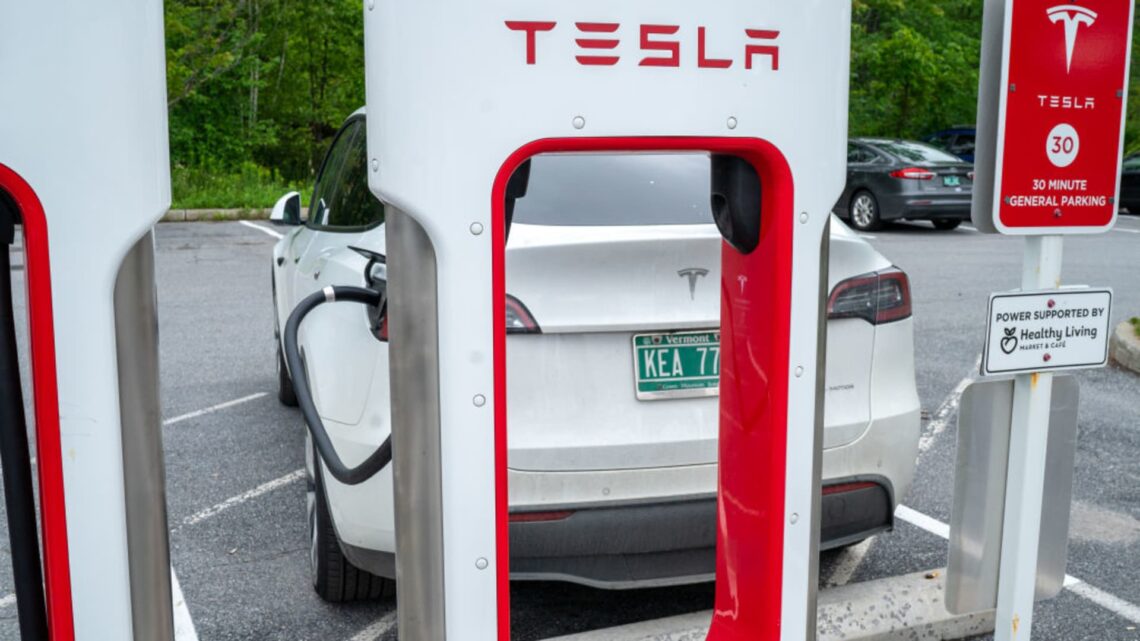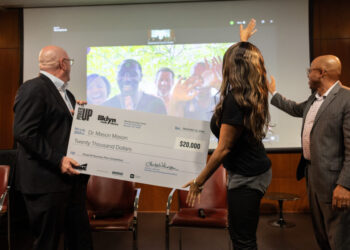A Tesla electric car is plugged into a recharging terminal at a Healthy Living Market store in South Burlington, Vermont, June 18, 2023.
Robert Nickelsberg | Getty Images
As of Thursday, owners of Ford electric vehicles — the Mustang Mach-E and F-150 Lightning — in North America finally have the ability to power up using Tesla Superchargers.
Ford CEO Jim Farley wrote in a post on LinkedIn that the charging partnership, which involves use of fast-charging adapters, should “improve the EV ownership experience,” for Ford EV drivers, noting that “I’ve tested it myself and its works great.”
Tesla has forged a similar agreement with General Motors, which was announced in June, giving GM customers access to more than 12,000 Tesla fast chargers in the U.S and Canada. GM CEO Mary Barra said at the time that her company expected to save up to $400 million of a planned investment in building out EV charging stations.
The partnerships mark a strategy shift for Tesla CEO Elon Musk, who for years touted the exclusivity of Tesla’s charging network and his company’s ability to build reliable charging locations that would keep consumers from sitting in long lines. Becoming the charging standard has required Tesla to invest heavily in technical and business development.
But Tesla has plenty to gain from working with others.
Sam Fiorani, vice president for global forecasting at AutoForecast Solutions, said these efforts should eventually yield huge financial benefits for Tesla, including from environmental credits and fees for charging sessions.
Currently, Tesla operates about one in three charging stations in the U.S. Even if adoption of battery electric vehicles slows domestically, and the fleet of electric vehicles is smaller than what the government and many automakers planned six months ago, “Tesla could still see $6 billion to $12 billion a year,” by 2030 from its expanded charging business, Fiorani said in an email.
While Tesla could lose some customers to other brands by…
Read the full article here








